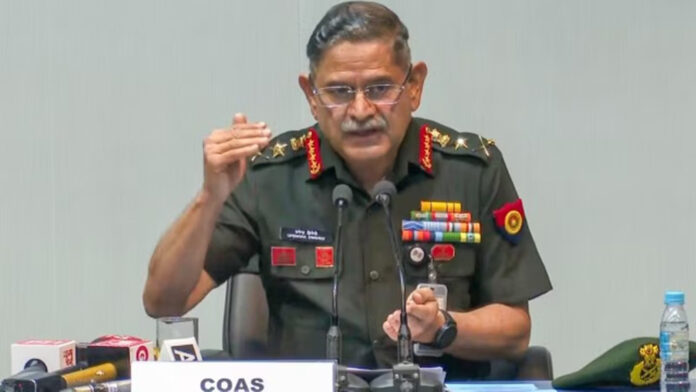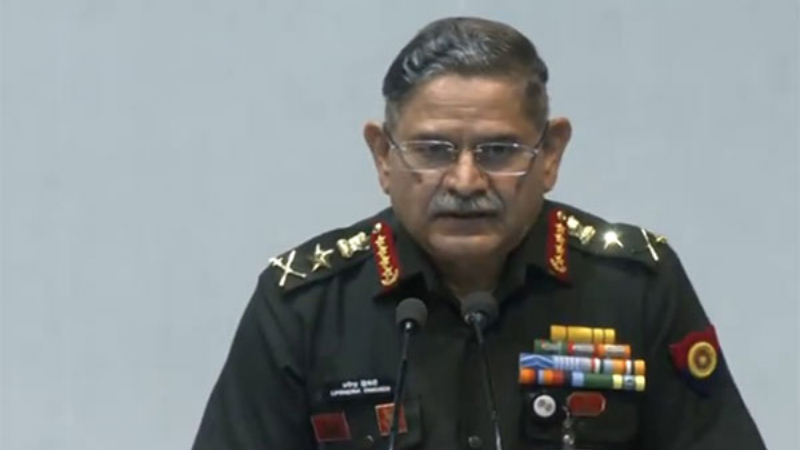India China standoff continues to dominate discussions as Army Chief General Upendra Dwivedi acknowledged the persistent “degree of standoff” between the two nations despite progress in some areas. Speaking at the annual Army press conference ahead of Army Day celebrations, General Dwivedi emphasized the need for renewed trust and diplomatic negotiations to address the lingering issues along the Line of Actual Control (LAC).
Current Status Of The Standoff
General Dwivedi provided a comprehensive update on the situation in Eastern Ladakh, describing it as “stable but sensitive.” Despite disengagement at key friction points like the Depsang Plains and Demchok, he highlighted that significant challenges remain.
Key Developments Since 2020:
- Construction And Stocking: Both sides have engaged in infrastructure development and stockpiling along the LAC.
- Temporary Moratoriums: To prevent violence, both forces have established temporary no-patrolling zones at several friction points.
- Trust Deficit: The need for a redefined trust between India and China is crucial for long-term resolution.
Diplomatic And Military Engagements
General Dwivedi underlined the importance of diplomatic channels and military-level discussions in managing the situation.
Recent Diplomatic Efforts:
- 22nd SHMC Meeting (October 21, 2024): High-level military commanders discussed disengagement strategies.
- WMCC Meeting (December 5, 2024): Focused on cooperation and coordination to avoid further escalations.
- Special Representatives Meeting (December 18, 2024): Addressed broader strategic concerns between the two nations.
Military Initiatives:
- Delegation of decision-making powers to corps commanders for resolving minor frictions.
- Joint verification patrols to ensure mutual agreement on disengaged areas.
- Reopening of grazing grounds in disputed regions through mutual understanding.
Challenges In Resolving The Standoff
Despite progress, significant hurdles remain in normalizing the situation along the LAC:
1. Buffer Zones vs. Temporary Moratoriums:
- General Dwivedi clarified that there are no official “buffer zones” but areas with a temporary moratorium to reduce the risk of violence.
- These zones can be revisited based on evolving conditions.
2. Lingering Trust Deficit:
- The trust between India and China has been significantly eroded since the Galwan Valley clash in June 2020.
- Both nations need to redefine mutual trust to ensure lasting peace.
3. Infrastructure And Deployment:
- Continued construction and troop deployments on both sides signal preparedness for prolonged tensions.
- This has further complicated negotiations and trust-building efforts.
Historical Context: The 2020 Galwan Valley Clash
The ongoing standoff traces its roots to the violent clash in the Galwan Valley in June 2020, which resulted in casualties on both sides. Since then, multiple rounds of talks have been held, leading to disengagement at several friction points.
Key Milestones In Disengagement:
- Withdrawal from PP 14, PP 15, PP 17A, and the north and south banks of Pangong Tso.
- Creation of no-patrolling zones to minimize confrontations.
However, these measures are seen as temporary solutions rather than long-term resolutions.
India’s Diplomatic Stance
External Affairs Minister S Jaishankar recently informed Parliament about the progress in disengagement and reiterated India’s firm stance on safeguarding national interests.
Key Points From Jaishankar’s Address:
- Disengagement Status: Full disengagement achieved in Depsang and Demchok.
- Temporary Measures: Steps taken to prevent friction are limited and can be revisited.
- Strategic Patience: India remains resolute and patient in addressing the standoff.
Path Forward: Building Trust And Achieving Resolution
General Dwivedi emphasized the need for India and China to redefine trust and engage in meaningful dialogue.
Steps To Build Trust:
- Transparent Communication: Regular meetings at diplomatic and military levels to foster understanding.
- Joint Verification: Ensuring compliance with disengagement agreements through joint inspections.
- Confidence-Building Measures: Initiatives such as reduced troop presence and infrastructure development restrictions.
Strategic Patience:
India’s approach, as highlighted by General Dwivedi, focuses on patience and perseverance. By addressing minor issues at lower levels and engaging in high-level discussions for broader concerns, India aims to achieve sustainable peace.
Stable Yet Sensitive
The India China standoff remains a complex and evolving situation. While progress has been made in disengagement, the road to restoring trust and achieving a lasting resolution is long. Diplomatic efforts, strategic patience, and a commitment to safeguarding national interests will play a pivotal role in navigating this sensitive issue.



